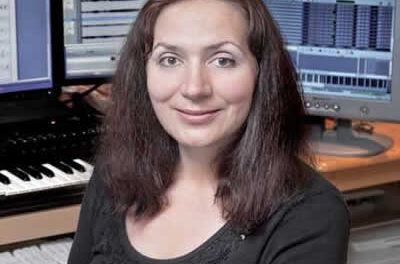A large and appreciative audience gathered to hear the Russian-American violinist Yevgeny Kutik play intimate chamber music in a relaxed setting Sunday afternoon. I suspect most of the audience had heard the young artist play with the Greensboro Symphony Orchestra under the direction of Dmitry Sitkovetsky earlier in the week.
As is the custom for these chamber concerts, Sitkovetsky welcomed the crowd and provided some background material about the music (and, in this case, about the artist). He informed us that Brahms had been a very active chamber composer and was especially influenced by the violin virtuoso Joseph Joachim, a musician with whom he frequently worked. The piece we were about to hear was Brahms’ last violin sonata, No. 3 in D minor, Op. 108, written in 1888. This work, unlike his three-movement violin sonatas, is cast in four movements.
Kutik was accompanied by the wonderful pianist, Inara Zandmane, who played in every composition on the program. This is a work as much for the piano as violin, and the musicians collaborated to make the most out of Brahms’ sumptuous material. The opening, for example features a lyric violin line over an agitated piano accompaniment, but before long, the spotlight is on the piano, which offers up sturdy chords.
The second movement Adagio reveals a beauty that borders on being painful. The third movement was marked by strong rhythms from both performers. The finale was quintessential Brahms: thick piano chords with complete sharing of material between the two instruments and gentle chorale textures contrasting with the drama of other passages.
Kutik’s playing was marked by extreme eloquence and clarity, as we heard when he performed with the symphony. Zandmane’s playing was sensitive and full of romantic sentiment. The audience’s thunderous applause testified to the moving performance.
Ernest Bloch (1880-1959) was 43 when he wrote Nigun from Baal Shem. This is music that certainly belongs in a temple, as Bloch is known for his compositions inspired by Jewish tradition, and Nigun is a form of religious song that is somewhat improvisatory in nature. Baal Shem is an honorific title given to certain rabbis. This piece certainly sounded improvisatory and rhapsodic, with the violin intoning recitative-like passages over piano tremolo. Here, Kutik employed a more earthy, thicker violin tone.
Sitkovetsky returned to the stage, this time to perform two works by Rodion Shchedrin (b. 1932) who had also been a featured composer in the GSO concerts earlier in the week. Sitkovetsky explained that Shchedrin was a long time friend and called him the “greatest living Russian composer.” The two pieces were for violin and piano: In the Style of Albeniz (1973) and Humoresque (adapted from the composer’s 1956 ballet The Humpbacked Horse, which Sitkovetsky saw as a 5-year-old).
The “Albeniz” piece was a bit of a fractured tango, with characteristic rhythms that abruptly stopped and started. Humoresque employed multiple advanced techniques for the violin and extreme registers in the piano. Both were great fun and wonderfully performed by Sitkovetsky and Zandmane.
The concert concluded with Prokofiev’s “Overture on Hebrew Themes” for clarinet and piano quintet, written in 1919. Sitkovetsky, Kutik and Zandmane were joined by violist Maureen Michels, cellist Anne Sellitti, and clarinetist Kelly Burke. This is a fun 10-minute piece, built around an infectious clarinet tune with a wry-humored accompaniment. Languid passages of motionless color break up the more rhythmically active sections, and snippets of tunes are passed around through all six musicians, each making the most out of their moments in the spotlight. But that opening tune always returns and eventually closes out the piece.











